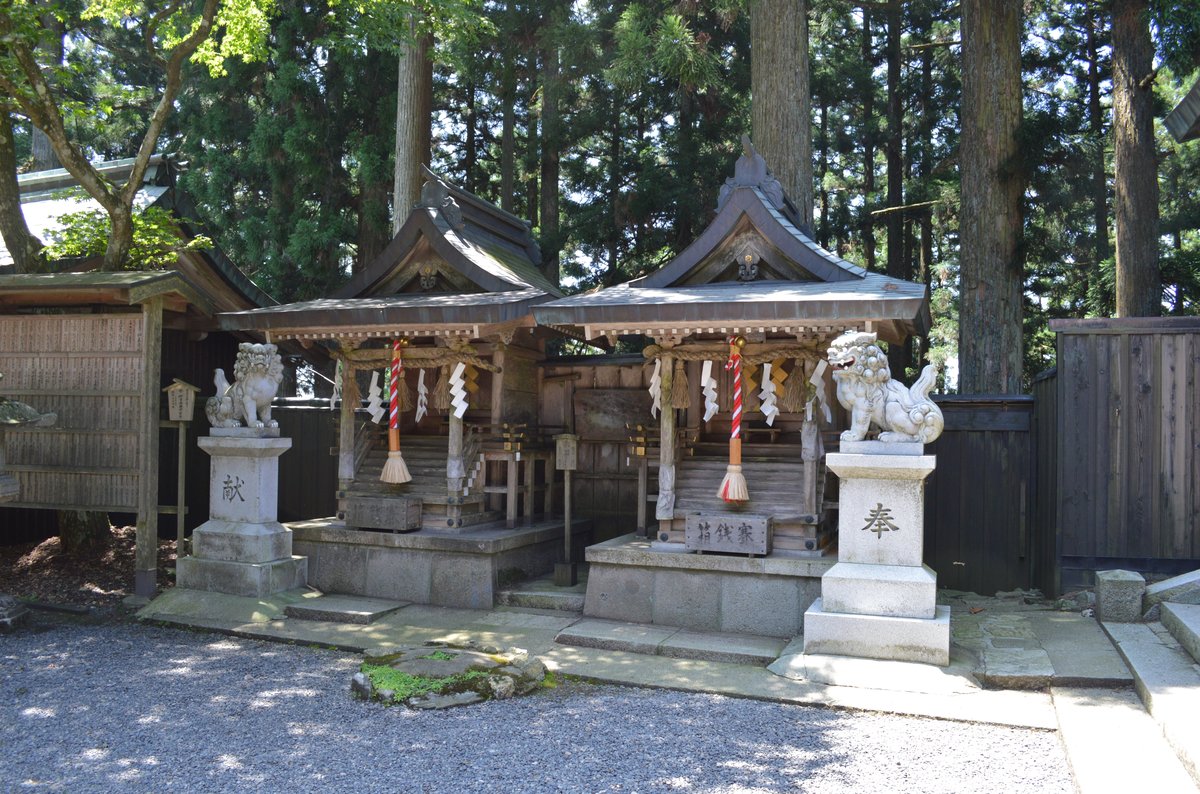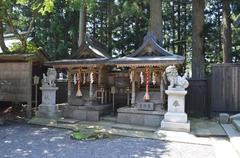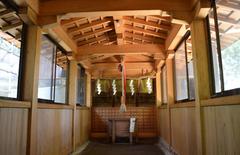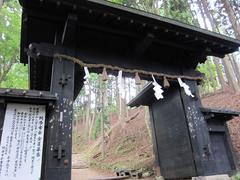
Atago Jinja Kyoto: Visiting Hours, Tickets, and Historical Sites Guide
Date: 15/06/2025
Introduction
Perched atop the sacred Mount Atago, northwest of central Kyoto, Atago Jinja stands as a beacon of Japan’s spiritual heritage and cultural history. Established over 1,300 years ago by figures such as En-no-Gyoja and Taichō, the shrine exemplifies the syncretism of Shinto, Buddhist, and Shugendō practices. As the head shrine for nearly 900 Atago shrines across the nation, it is primarily dedicated to Atago Gongen, the revered deity of fire prevention—crucial in a city famed for its wooden architecture. Pilgrims and travelers alike embark on a challenging 4-kilometer ascent through tranquil cedar forests to reach the shrine at Kyoto’s highest point. Beyond its spiritual gravity, Atago Jinja is enveloped in natural splendor and historic architecture, notably its Edo-period structures and iconic vermilion torii gates.
This comprehensive guide details Atago Jinja’s visiting hours, admission, trail and access information, special events such as the Sennichi Mairi pilgrimage, and nearby attractions, including historic districts and renowned temples. Whether you are drawn by history, spirituality, or cultural curiosity, this resource equips you with practical tips, etiquette insights, and sustainable tourism guidance for a respectful and enriching experience. (jpmanual.com, elementaljapan.com, kyototravel.info)
Contents
- Origins and Historical Development
- Religious and Cultural Significance
- Architectural Heritage and Preservation
- Visiting Atago Jinja: Hours, Tickets, and Access
- Special Events and Traditions
- Nearby Attractions
- Community Involvement and Preservation Efforts
- Challenges and Sustainable Tourism
- FAQ
- Conclusion
1. Origins and Historical Development
Atago Jinja’s legacy dates back to the early 8th century, founded as Hakuun-ji Temple (701–704 CE) by En-no-Gyoja, the father of Shugendō, and the monk Taichō. It was restored in 781 CE and later re-dedicated to Atago Daigongen for fire prevention. After the Meiji-era separation of Buddhism and Shinto (Shinbutsu Bunri), the site became a purely Shinto shrine. Today, it presides as the Grand Head Shrine for nearly 900 Atago shrines nationwide, anchoring a network of fire-protection worship throughout Japan. (jpmanual.com)
2. Religious and Cultural Significance
Atago Jinja enshrines Atago Gongen, a syncretic fire-protection deity, alongside other kami such as Okuninushi, Izanami, Amaterasu, and Kagu-tsuchi. Its spiritual function is to shield Kyoto from fires, a role reinforced by the widespread distribution of “Hi no yōjin” (fire prevention) amulets. The arduous 4 km pilgrimage ascent embodies the Shugendō tradition, blending physical endurance with spiritual purification. The shrine’s location in Kyoto’s northwest aligns with the city’s feng shui design, acting as a protective bulwark against misfortune. (elementaljapan.com, diversity-finder.net)
3. Architectural Heritage and Preservation
The main hall (honden), rebuilt in 1836 and renovated in the Showa era, is an example of Edo-period architecture. The shrine precinct features torii gates, subsidiary shrines (Shinmei-sha, Kumano-sha, Inari-sha), and ritual spaces like the chozu-sha. Preservation is achieved through collaboration between religious custodians, local authorities, and volunteers, with the mountain’s isolation protecting the site from urban encroachment but demanding ongoing maintenance. (jpmanual.com)
4. Visiting Atago Jinja: Hours, Tickets, and Access
- Visiting Hours: Generally 9:00 AM–5:00 PM; check ahead for seasonal or event-based changes. (kyototravel.info)
- Admission: Free; donations and amulet purchases are encouraged.
- Access: Reachable via a 4 km hike from the Kiyotaki trailhead (approx. 2.5 hours one way). Wear sturdy shoes and bring water.
- Guided Tours: Local operators offer guided hikes and cultural tours, providing historical and spiritual context.
Trail Details:
- Trailhead: Kiyotaki bus stop, accessible from Arashiyama via City Bus 92 or 94.
- Distance/Elevation: 4 km, 900 m elevation gain, summit at 924 m.
- Duration: 3–5 hours round trip.
- Facilities: Restrooms and vending machines at the summit; none along the trail.
- Best Seasons: Spring (late cherry blossoms), autumn (colorful foliage), and during the Sennichi Mairi pilgrimage.
(travel.gaijinpot.com, wandering-world.com, kshouse.jp)
5. Special Events and Traditions
Sennichi Mairi (July 31–August 1):
The annual nighttime pilgrimage attracts thousands who ascend the mountain to earn the merit of 1,000 visits. Lanterns line the trail, creating a magical atmosphere. (diversity-finder.net, elementaljapan.com)
Monthly Festivals:
On the 24th of each month, rituals and abstinence are practiced in honor of the shrine’s deity.
(WKD Saijiki)
6. Nearby Attractions
- Saga Toriimoto District: Preserved Edo-period streetscape with traditional machiya, shops, and tea houses. (kyoto-museums.jp)
- Jingo-ji Temple: 52 minutes on foot, famous for autumn foliage.
- Nison-in Temple: 85 minutes on foot.
- Seiryō-ji Temple: Noted for its Buddha statue, 87 minutes away.
- Arashiyama District: Home to Tenryū-ji Temple and Iwatayama Monkey Park.
Other highlights: Kinkaku-ji (Golden Pavilion) and Ryoan-ji, accessible by public transport.
7. Community Involvement and Preservation Efforts
Atago Jinja’s vitality is sustained by local community members, religious practitioners, and volunteers. The Saga Toriimoto Town Preservation Center actively supports conservation and cultural awareness. (medium.com)
8. Challenges and Sustainable Tourism
Environmental wear, tourist pressure, and climate concerns are addressed through collaborative stewardship and visitor education. Visitors are urged to respect etiquette, avoid littering, and heed trail and shrine guidelines to protect the site’s sanctity and surroundings. (medium.com)
9. Frequently Asked Questions (FAQ)
Q: What are Atago Jinja’s visiting hours?
A: Typically 9:00 AM–5:00 PM; confirm ahead for special events.
Q: Is there an entrance fee?
A: No; donations and amulet purchases are appreciated.
Q: How do I reach Atago Jinja?
A: Via a 4 km hike from Kiyotaki trailhead, accessible by bus from Arashiyama.
Q: Are guided tours available?
A: Yes, local operators provide guided hikes and shrine visits.
Q: What should I bring?
A: Hiking shoes, water, snacks, layered clothing, cash, and a camera.
Q: Can I take photos?
A: Outdoor photography is permitted; avoid photographing inside the main hall or during rituals.
10. Conclusion
Atago Jinja is a living testament to Kyoto’s enduring spiritual traditions, natural beauty, and dedication to cultural preservation. Its role as a protector against fire, coupled with the challenge of its pilgrimage and the vibrancy of its festivals, makes it an essential and rewarding destination for visitors. Prepare thoughtfully, respect local customs, and immerse yourself in the unique heritage that flourishes atop Mount Atago.
For further information, explore these resources:
- jpmanual.com
- elementaljapan.com
- kyototravel.info
- travel.gaijinpot.com
- visitkansai.com
- medium.com
- wandering-world.com
- kshouse.jp
- kyoto-museums.jp
- WKD Saijiki
- Trek Zone













































































